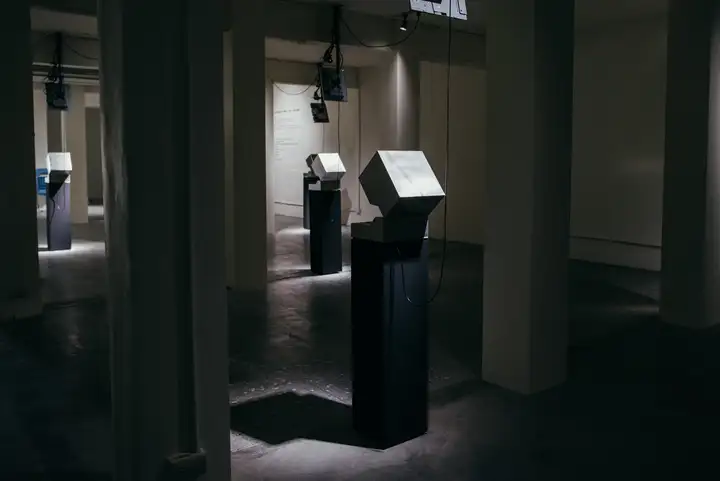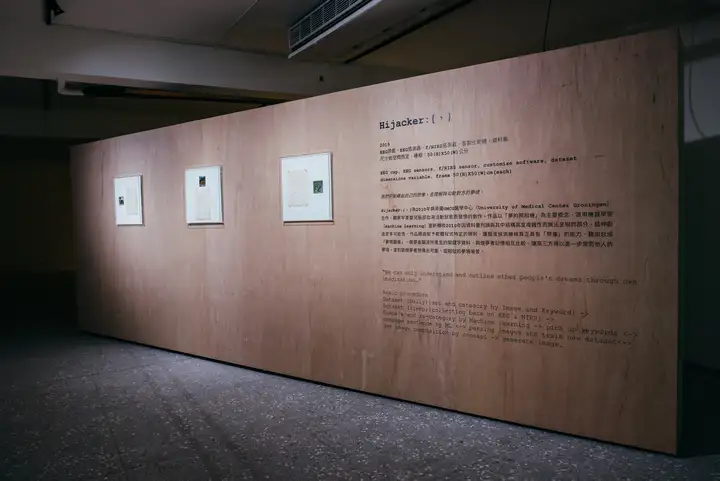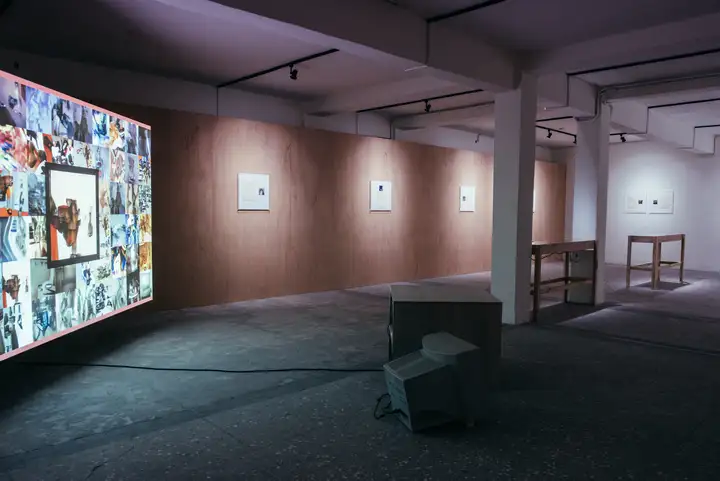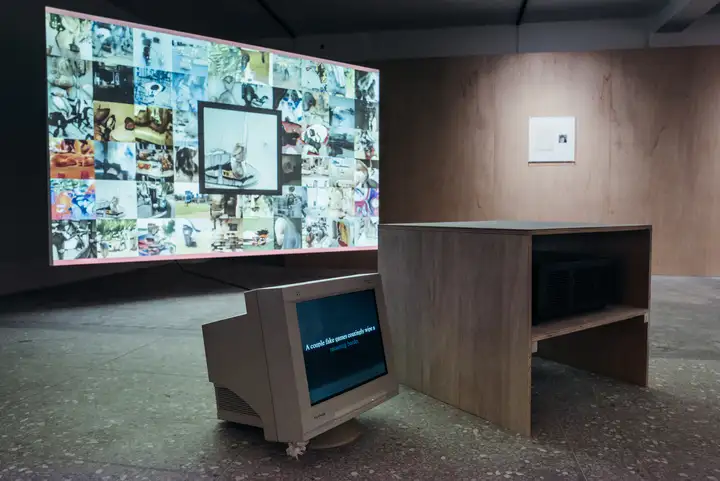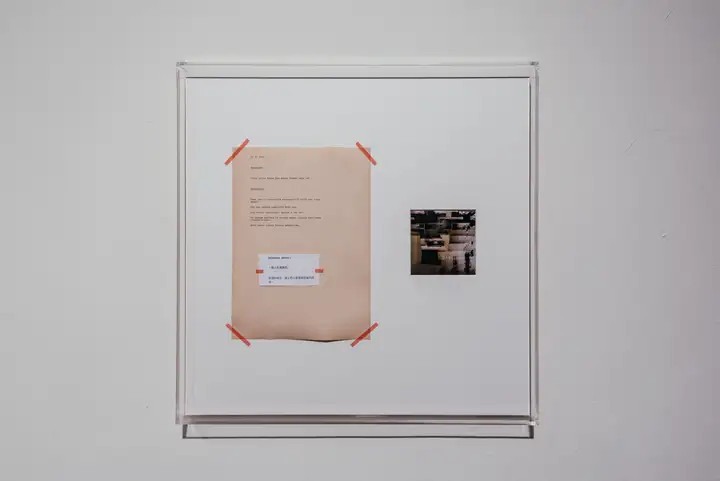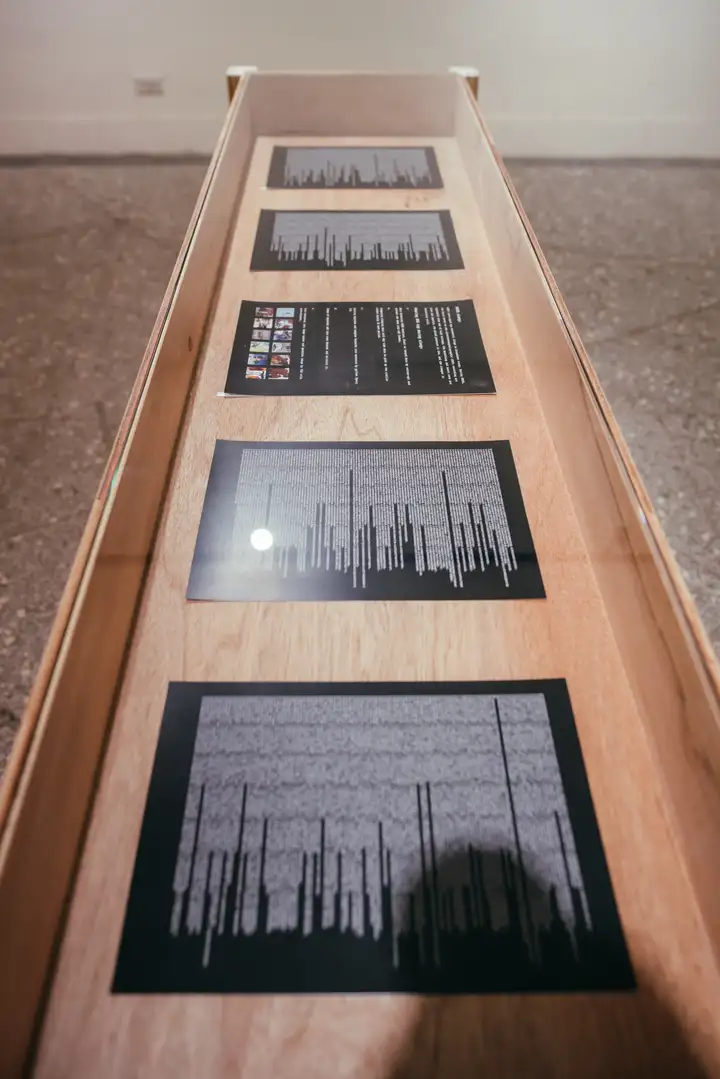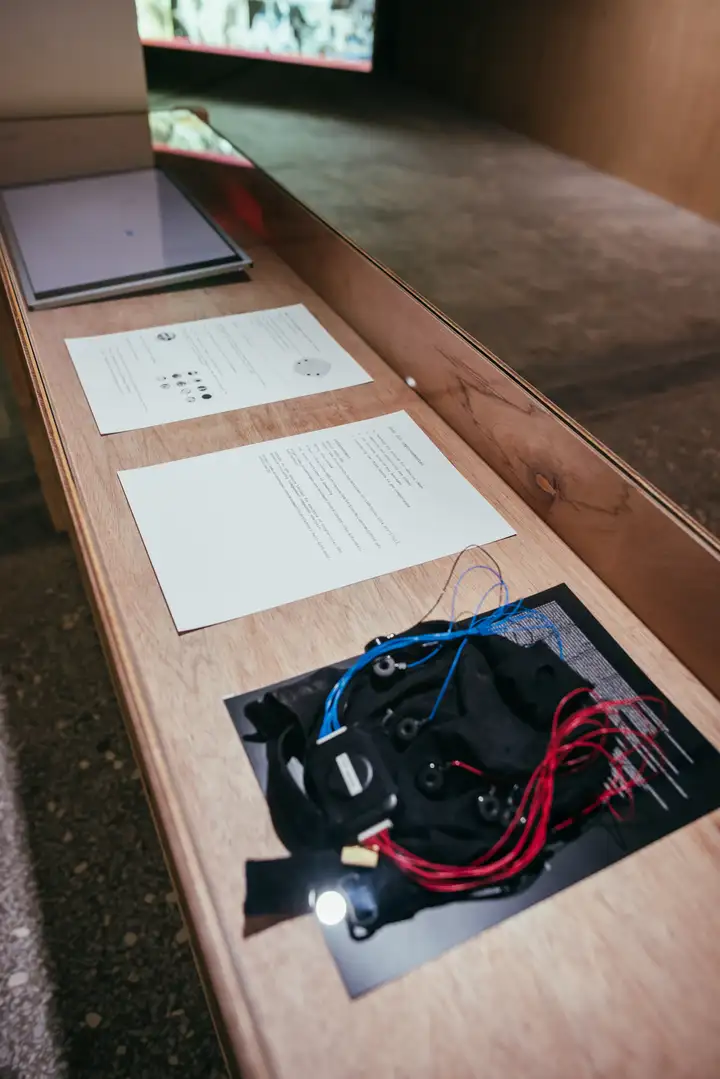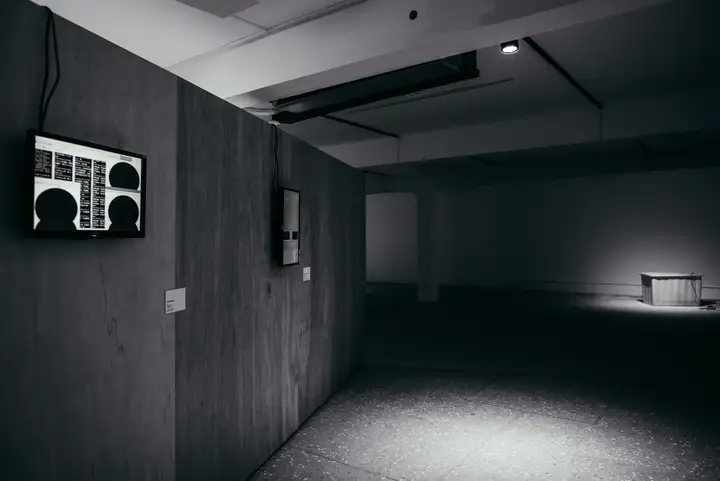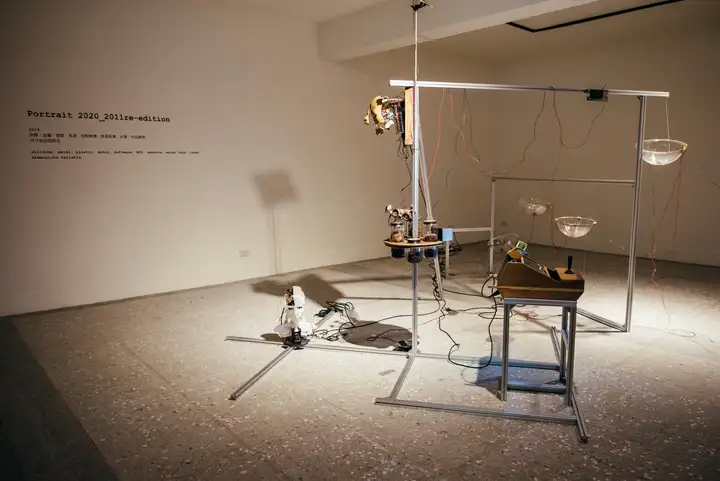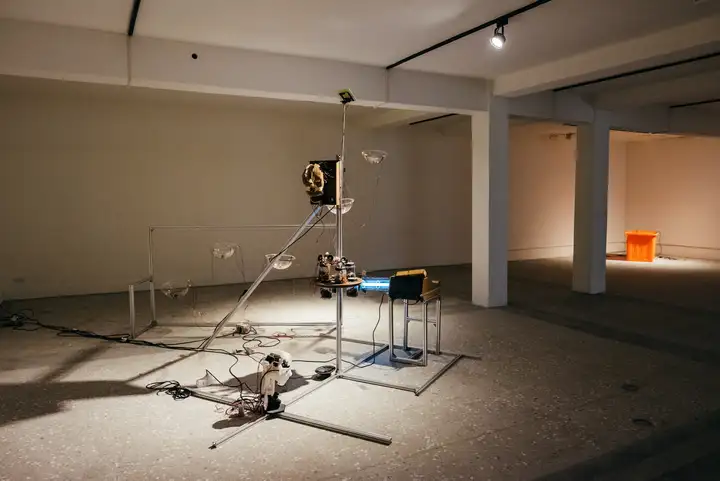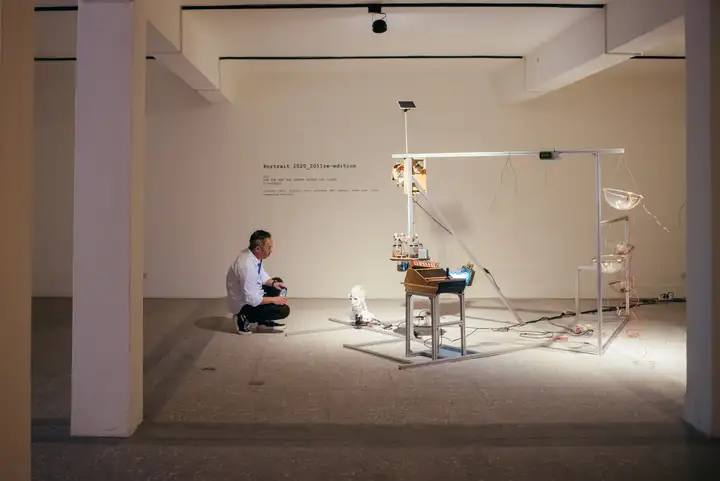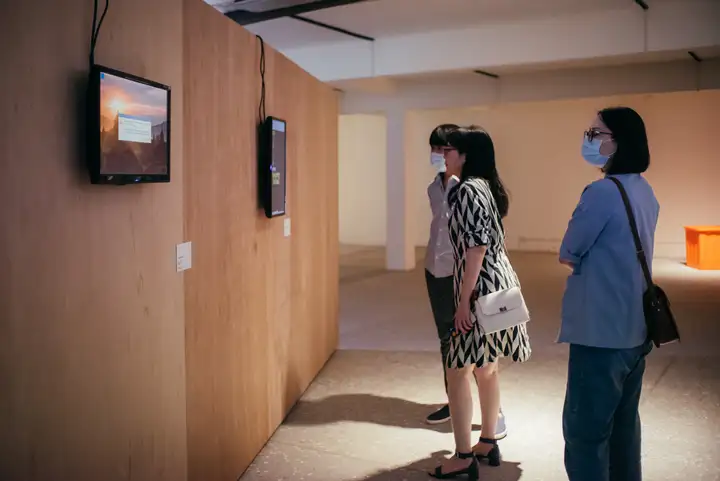Assimilator

C-Lab Art Space lll
2020. 6.06-8.02
2019年「銅鐘藝術賞」鄭先喻個展—「同化者Assimilator」,試圖探索現代科技框架之下,網路世界全球化的現象對人類生活的影響。當科技發展逐漸控制人類社會食、衣、住、行的一切,改變了生活型態與慣性思維,這些被機械制約而失去主宰權的人類群體,在同化過程中是否還擁有「個體思考」與「想像力」的能力? 本展將揭示當代科技、人文藝術領域無法定義的觀點進行梳理,以情感、行為連結科技作為出發點,將機械與人性運作之中那些關於人類情感的矛盾、道德衝突等現世議題做了另類註解以及新的闡釋。
網路最初應用於國與國的軍事與政治用途,直至今開放給民間使用而成為資訊散播的主流平台。網際網路從簡易的傳輸需求,再到擁有社群能力、娛樂、服務及交易等等功能,使得人類在知識學習及溝通交流的方式起了化學變化,致使獲取訊息的習慣產生結構性的改變,其中最顯著的是「記憶」擷取訊息的方式。例如搜尋引擎讓知識取得更為快捷,吸收速食化反應了大腦思考的方式,例如記憶關鍵字,再由關鍵字透過搜尋引擎找到訊息內容,因為輸入便利與網路依賴,相對地讓大腦判斷資訊與情報過程中產生片斷記憶而失準。
面臨資訊快速膨脹且易於取得的時代,藝術家鄭先喻藉由「同化」一詞象徵吸收訊息、學習、獲取情報過程中之正反兩面的關係。在人類即將迎接「零延滯」網路社會的時代,電腦軟體與硬體也會迎來跳躍的進化,生活與網際網路必然更緊密連結,所謂的Internet似乎會成為另一種型態的Intranet (註:早期不對外的對內網路),人與人,人與環境的溝通交流會進入全新的思考方式,享受科技便捷快速的當下,也帶來焦慮與不安的狀態。新作〈 Hijacker:{,} 〉將藉由賦予機械想像力的方式去凸顯「制式化」下被「規格同化」的社會,作品讓做夢者去敘述自己的夢境,透過第三方將夢境進行勾勒、想像他人的夢境,嘗試探討訊息傳遞之間的主觀交換與變化,而想像力則可能變成特殊能力的關鍵;〈Invitation〉與〈What’s in the middle〉則探討網路應用的負面活動與狀態所造成生活上的影響,作品聚焦延伸的個資安全、垃圾資訊、網路犯罪、病毒……等。〈Discharge what you charged〉迫使觀者在無預警失去手機的方式之情緒心境,進一步反思被機械宰制的被動生活型態,以及衍生的個別生命經驗。
“Assimilator” is a solo exhibition by Hsien-Yu CHENG, recipient of the 2nd Tung Chung Art Award, which looks into the fabric of technology to explore how our globalized, internet connected world affects our lives. As technology gradually controls what people eat and wear and where they live and go, lifestyles, habits, and thinking have changed. If people give up authority over their lives to technology, do they still possess abilities to “think independently” and “imagine” during the process of their assimilation? Starting from observations of emotions and actions that are interlinked with technology, this exhibition reveals ideas that are ill-defined by contemporary technology, arts or humanism; and attempts to present alternative commentaries and new interpretations on the emotional contradictions and moral conflict between machines, gadgets and humanity.
The Internet was initially used for military and political communications. It is now the main platform for public dissemination of information. From transmission of messages, its functions have expanded to include social networking, entertainment, services, and transactions. Within this context, chemical changes has occurred to how people acquire knowledge and communicate and interact, leading to structural changes in the reception of information. The most obvious example is how “memory” extracts information. Search engines provide rapid access to information, and the “fast-food style of knowledge acquisition” reflects the way our brains work: Remember the keywords, and use search engines to search the keywords for information. Due to the convenience of input and reliance on the Internet, inaccurate memories emerge during the processing of information by the brain.
In this era of rapid expansion of and access to information, CHENG uses the term “assimilator” to symbolize the positive and negative relationships in the process of absorption of messages, learning, and obtaining of information. People will soon enter the age of “zero latency” Internet, where continued evolution of computer hardware and software, will inevitably bring our life and the Internet closer together. The so-called Internet becomes a type of Intranet (early internal network not available to the public) and communication and exchange between people and between people and the environment enter an all-new state. While the convenience of technology is enjoyable, it also triggers anxiety and feelings of uncertainty. In his new work, Hijacker: {,}, CHENG reveals society’s “specification assimilation” due to the “standardization” by endowing machines with imagination. Dreamers share their dreams. Through third party description and imagination of other people’s dreams, subjective exchanges and changes that take place during the transmission of messages are discussed. Moreover, imagination may become key to unique abilities. Invitation and What’s in the Middle discuss the impacts of negative Internet use and applications, such as hacking of personal information, spam messages, cybercrime, and viruses. Discharge What You Charged forces visitors to face their emotions upon losing access to their cell phones without warning. Moreover, it reflects on passive lifestyles under the domination of machines and derived life experiences.

